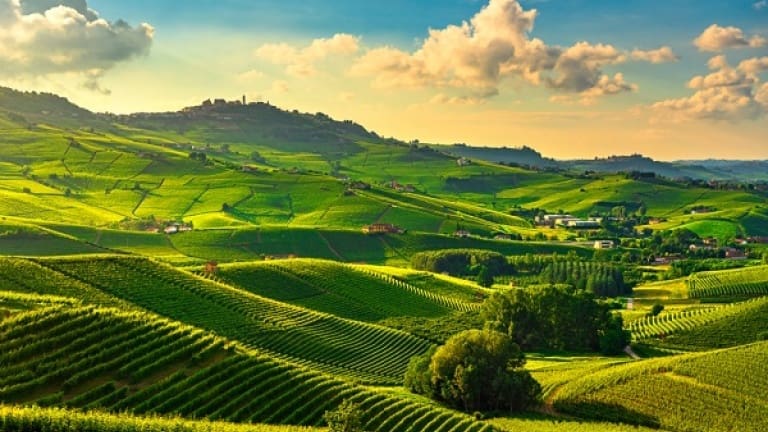Uncorking the Secrets of Barolo: A Wine Lover’s Guide

Why is Barolo so exceptional? Why is considered the king of Italian wines? The Italian Stallion of red wines?
The answer is deceptively simple: it’s a matter of terroir.
Nebbiolo has found unique soil and particular climatic conditions in the 11 municipalities of the Langhe, just south of the city of Alba, so that manages to rise above the other Nebbiolo productions and takes the name of one of these villages: Barolo.
Wines that have inherited the name of the town of origin can be counted on the fingers of one hand: his brother Barbaresco, Soave, Bardolino.
Few wines can boast such a strong bond with their land, but the reason is also the fragility of this noble grape, whose bunches need a long maturation that lasts until late November.
How is Barolo made?
Barolo is a red wine made only with Nebbiolo grapes and must age for at least three years, 18 months in wood casks. With five years of aging becomes Barolo Riserva. The most used clones are Nebbiolo Lampia, Michet, and Rosé.
Organoleptic characteristics of Barolo
You will recognize this great wine from its transparent ruby color, which veers towards orange as it gets older. Only the best Pinot Noir can boast such clear, fantastic transparency.
The other unique feature is a fabulous, ethereal bouquet, full of red berries such as raspberries and cassis, cherry liqueur, dried flowers, spices, leather, green pepper, anise, nutmeg, and licorice. Still, it’s above all the bond with the earth to make Barolo unique. You will recognize several fragrances linked to Langhe: hazelnuts, leaves, and truffles. Not coincidentally, Barolo is the favorite wine of the noble Tuber Magnum!
What does Barolo wine taste like?

What does Barolo wine taste like?
On the palate, it is elegant and measured. Do not expect muscular, fruity bomb or wines particularly acid, but somewhat earthy, with tannins that give structure and persistence to a fruit laced with delicious notes of licorice and coffee.
Barolo’s production area
Even though they are only a few kilometers apart, few hills have such a wide range of soil types. Barolo takes different forms, faces, and flavors from one municipality to another. Monforte d’Alba is known for its smooth and precise wines, Castiglione Falletto for its strong tannins, Serralunga for its sharpness, and La Morra for its elegance.
This is only an indicative division. There are exceptions, different stylistic interpretations to consider, and of course, the method of vinification.
These are the villages where it’s possible to produce Barolo, if you are going to make a Barolo tour soon, just make a tattoo on your arm: Barolo, Castiglione Falletto, Cherasco, Diano d’Alba, Grinzane Cavour, La Morra, Monforte d’Alba, Novello, Serralunga d ‘Alba and Verduno.
if you want to learn more about this topic, we refer you to a specific page where we talk about all the “crus” of each single production area.
50 shades of Barolo

If the vintage just put on the market is immediately round and ready, it means that we are dealing with a very hot vintage and that wine will most likely not be able to age for a decade. With the “king of wines,” there are no compromises. Long aging, first in wood and then in the bottle, is the way to reach excellence: the development of those refined and pungent tertiary aromas that show that a great Barolo is ready to drink.
Its great polyphenols have always required long aging in large oak casks to develop their full potential. Still, the secession of the modernists was very well known; they began producing Barolo, reducing the aging time, and introducing French barrel maturation.
Many winemakers rightly complained about the difficulty of painstaking work, projected in the distant future and often uncertain, to produce wines that are not so easy to approach. Still, in the process, you are likely to sacrifice something.
You just have to experience it, uncork and taste as many Barolos as you can, and tell us your favorite bottles!
